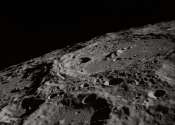Groundbreaking study sheds new light on galaxy evolution
Using integral field spectroscopy (IFS) and advanced modeling tools, Instituto de Astrofísica e Ciências do Espaço (IA) researchers Iris Breda and Polychronis Papaderos have achieved an important milestone towards solving ...









